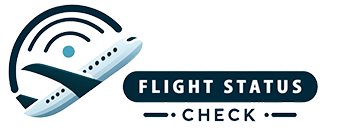Flight Status: How Technology is Revolutionizing Air Travel
Air travel has become an integral part of our globalized world, connecting people and cultures like never before. With millions of flights taking off and landing every day, monitoring the status of flights has become a crucial part of the travel experience. Thanks to advances in technology, passengers can now easily track the status of their flights in real-time, making the flying experience more convenient and efficient than ever before.
The status of a flight refers to its current position, departure and arrival times, delays, and any other relevant information. Traditionally, passengers relied on airport displays and announcements to stay informed about their flights. This often led to confusion and frustration, especially when dealing with delays or cancellations. However, with the advent of smartphone apps and online platforms, travelers now have easy access to up-to-date information about their flights.
One of the most popular ways to check the status of a flight is through airline and airport apps. These apps allow passengers to enter their flight details and receive real-time updates on departure and arrival times, gate changes, and any potential delays. This level of transparency has empowered passengers, giving them the ability to plan and adjust their travel schedules accordingly.
In addition to airline-specific apps, there are also third-party platforms that aggregate flight information from multiple airlines. These platforms offer a comprehensive overview of flight statuses, allowing passengers to track flights across different carriers all in one place. This convenience has become increasingly important as more people opt for multi-leg or interline journeys, where flights are operated by different airlines.
Furthermore, the advent of flight tracking websites has provided even more detailed information about the status of flights. These websites offer live maps that display the exact location of a flight in real-time, allowing users to see its route, altitude, and speed. This level of insight not only provides peace of mind to passengers but also serves as a fascinating tool for aviation enthusiasts.
The advancement of technology has also brought about improvements in communication between airlines and passengers. Airlines now use various channels such as SMS, email, and push notifications to keep passengers informed about their flight status. This proactive approach to communication has proven to be extremely beneficial, allowing passengers to make alternative arrangements in the event of unexpected changes.
Aside from the convenience for passengers, real-time flight status information has also had a significant impact on airport operations. By having access to accurate and instant data, airport staff can better manage resources, anticipate bottlenecks, and mitigate potential disruptions. This, in turn, leads to a more efficient and streamlined travel experience for everyone involved.
One interesting fact about flight status is that the data used to track flights is collected from a network of ground-based radar, satellites, and ADS-B (Automatic Dependent Surveillance-Broadcast) systems. This information is then processed and made available to the public in real-time, allowing for seamless tracking of flights across the globe.
While the majority of travelers have embraced the convenience of real-time flight status updates, there are still some challenges that need to be addressed. Connectivity issues, inaccurate data, and the potential for privacy breaches are all concerns that must be carefully managed as technology continues to evolve.
In conclusion, the ability to track the status of flights in real-time has revolutionized the air travel experience. It has empowered passengers, improved airport operations, and fostered a greater sense of transparency within the industry. As technology continues to advance, the future of flight status looks promising, promising even more convenience and efficiency for travelers around the world. So next time you’re waiting for a flight, take a moment to marvel at how far we’ve come in our ability to monitor and track the status of flights, and be thankful for the technology that has made the flying experience easier than ever before.

Leave a Reply